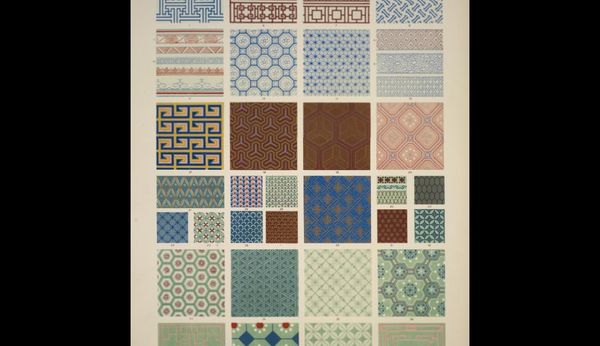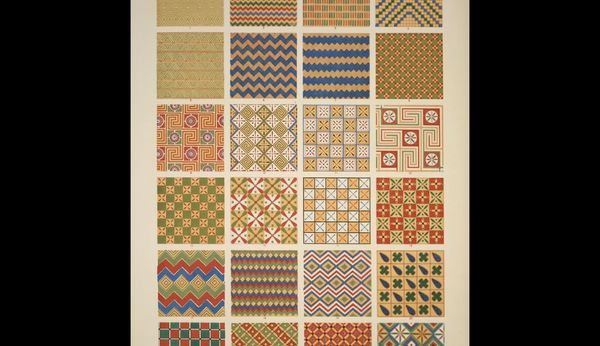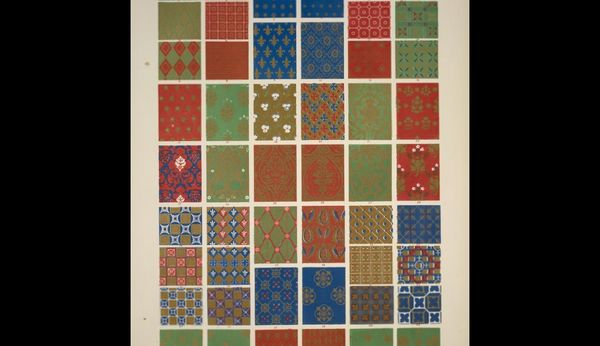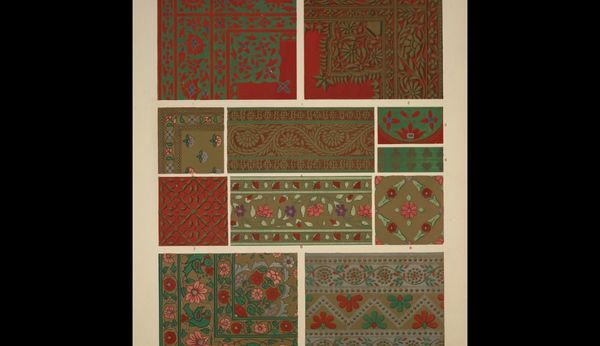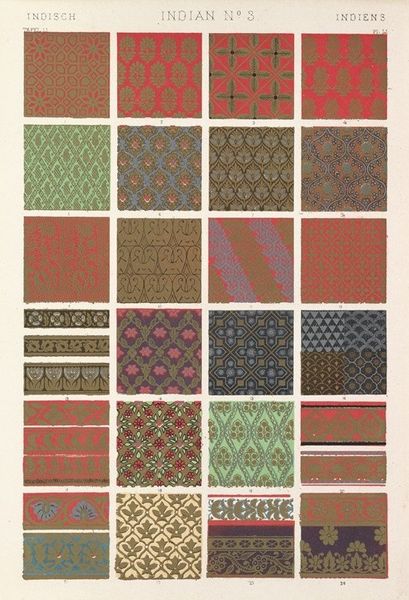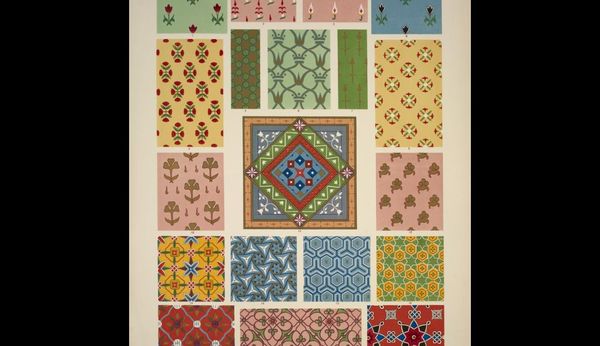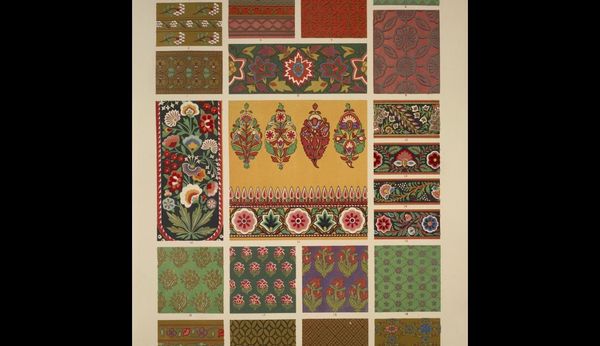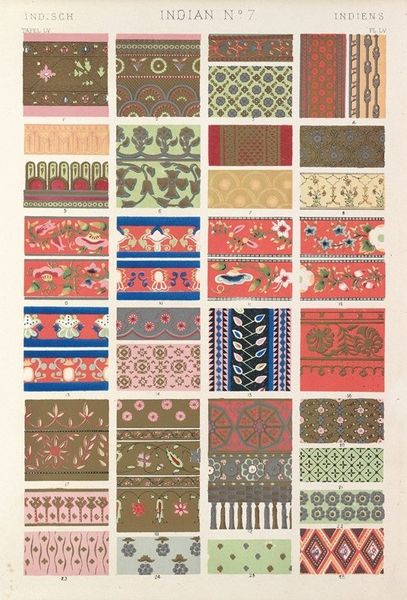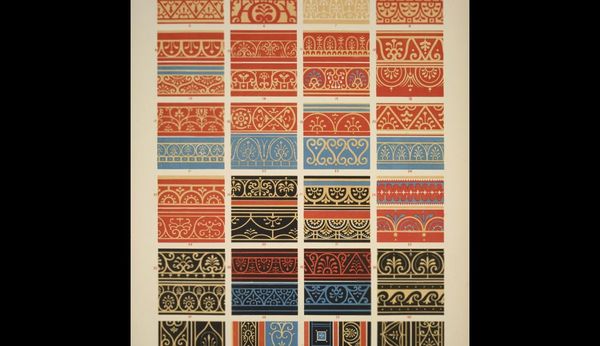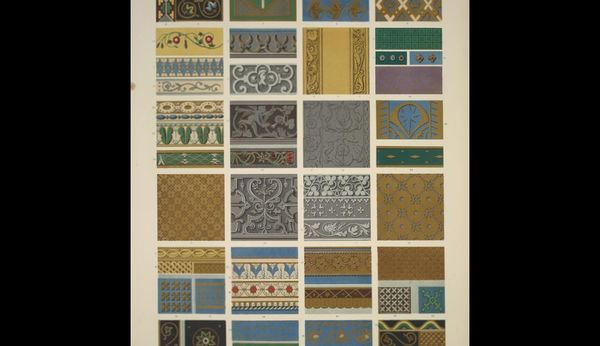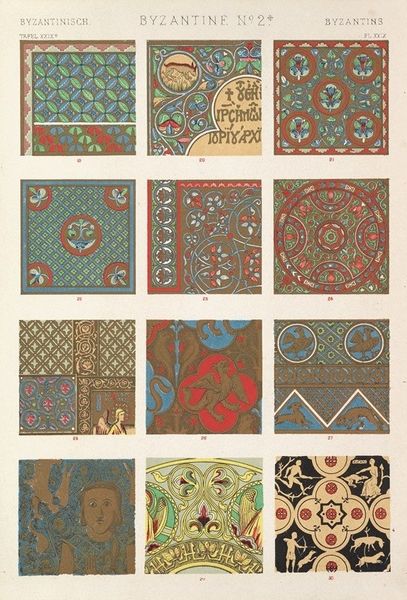
Indian Ornament no. 3. Ornaments from woven fabrics and paintings on vases exhibited in the Indian Collection, now at Marlborough House
0:00
0:00
drawing, graphic-art
#
drawing
#
graphic-art
#
pattern
#
geometric pattern
#
geometric
#
orientalism
#
line
#
decorative-art
Copyright: Public domain
Editor: Right, next up is "Indian Ornament no. 3" by Owen Jones. It seems to be a drawing of various patterns compiled together, taken from woven fabrics and paintings in the Indian Collection. I find the repetition of shapes almost hypnotic. What strikes you most about this piece? Art Historian: What I find compelling is how Jones's work, seemingly decorative, reflects the complex power dynamics inherent in the colonial gaze. These 'ornaments' were, in their original contexts, laden with cultural significance and symbolism. Editor: So, you're saying the act of extracting and re-presenting these patterns, even if seemingly benign, has political undertones? Art Historian: Exactly! Consider Marlborough House, where the original Indian Collection was exhibited. It was a very clear demonstration of Britain's colonial power. Jones's act of cataloging and simplifying these patterns arguably flattens their cultural richness. It’s as if these vibrant, meaningful designs were stripped of their context and transformed into mere aesthetic objects for Western consumption. Does seeing them compiled this way change your interpretation at all? Editor: It does make me question the artist’s intentions more deeply. Initially, I was drawn to the visual harmony, but now I see it could represent a kind of cultural appropriation, or at least a misrepresentation. It's a far cry from simply being pretty patterns. Art Historian: Precisely. It prompts us to consider how Western artists have historically engaged with, and often misrepresented, non-Western cultures. Perhaps Jones believed he was celebrating these designs, but celebration without understanding can easily slip into exploitation. What did you think about his use of colours, though? Do the reds and greens seem true to their cultures of origin? Editor: That's another thing to consider... It's made me realise how important it is to question the lens through which we view art from different cultures. I definitely have a new perspective to think about! Art Historian: And hopefully you will ask the same questions for all art forms created since that period.
Comments
No comments
Be the first to comment and join the conversation on the ultimate creative platform.
